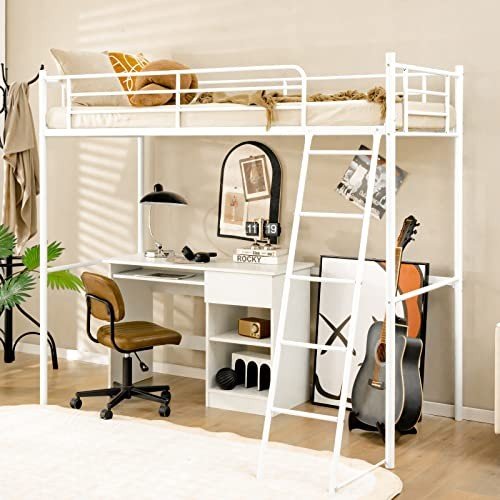10-Pinterest Accounts You Should Follow About Bunk Beds
Exploring Bunk Beds: A Comprehensive Guide
Bunk beds have long been a staple in children's bed rooms, dorms, and even homes with limited space. Not only do they offer a useful sleeping solution, but they also develop an enjoyable and creative environment for children and a great space-saver for adults and households. This post will check out whatever you require to understand about bunk beds, from types and products to safety suggestions and buying guidance.
Table of Contents
- Types of Bunk Beds
- Conventional Bunk Beds
- Loft Beds
- Triple Bunk Beds
- L-Shaped Bunk Beds
- Material Options
- Wood
- Metal
- Safety Considerations
- Buying Guide
- Frequently asked questions
Kinds Of Bunk Beds
Bunk beds come in various styles to suit different needs and choices. Here's a breakdown of the most common types:
Conventional Bunk Beds
Conventional bunks typically include 2 beds stacked vertically on top of one another. These beds are perfect for siblings sharing a room or for taking full advantage of sleeping space in guest rooms.
Loft Beds
Loft beds stand similarly to conventional bunk beds but do not have a lower sleeping location. Instead, they often incorporate a desk or seating location underneath, making them a great choice for little rooms requiring multifunctionality.
Triple Bunk Beds
Triple bunk beds are developed for three residents, with beds stacked in a three-tier configuration. These are less common but can be an enjoyable solution for large households or pajama parties.
L-Shaped Bunk Beds
With one bed placed horizontally and the other vertically, L-shaped bunk beds are often geared up with extra features such as desks or storage drawers and can match corner spaces in a room.
Comparison of Bunk Bed Types
Bed Type
Suitable Use
Description
Traditional
Shared bedrooms or visitor rooms
Two beds stacked vertically
Loft
Small spaces requiring multi-purpose space
Upper bed with open space underneath
Triple
Big families or sleepovers
3 beds stacked vertically
L-Shaped
Corner or versatile spaces
A combination of vertical and horizontal beds
Product Options
Bunk beds are manufactured from various products, with wood and metal being the most typical. Each product has its pros and cons.
Wood
- Sturdiness: Generally robust and can withstand years of use.
- Aesthetic Appeal: Offers a classic appearance that can mix with numerous decorations.
- Weight Capacity: Typically sturdier; can support heavier weights.
- Downsides: May be more expensive than metal choices and can be prone to scratches.
Metal
- Sturdiness: Generally lightweight and simple to move but still tough.
- Modern Design: Often is available in streamlined styles, making it appealing for modern areas.
- Affordable: Usually cheaper than wood options.
- Disadvantages: Can be cold to the touch in winter seasons and may not have the very same aesthetic appeal for some buyers.
Safety Considerations
When it comes to bunk beds, safety can not be neglected. Here are essential security pointers to keep in mind:
- Guardrails: Ensure that the leading bunk has guardrails on both sides to prevent falls.
- Tough Construction: Check for a solid construct and strong materials to withstand weight and movement.
- Weight Limit: Adhere to the producer's weight limit for both the upper and lower bunks.
- Ladder Design: Choose bunks with a safe, easy-to-climb ladder and prevent any sharp edges or rungs.
- Age Restrictions: Most producers suggest that children under the age of 6 must not oversleep the upper bunk.
Buying Guide
When searching for bunk beds, consider the following factors to discover the very best suitable for your needs:
- Space Availability: Measure the room size and ceiling height, guaranteeing there is sufficient space for the top bunk.
- Bed Size: Decide between twin, complete, or larger sizes based on your needs and the size of the space.
- Design Preference: Consider the total decor of the bed room to discover an appropriate design.
- Alleviate of Setup: Look for a bunk bed that is uncomplicated to assemble.
- Spending plan: Bunk beds are available in numerous price varieties, so figure out a budget plan before beginning your search.
Frequently asked questions
1. What is the suggested age for children to sleep on the leading bunk?
Kids aged 6 and older are normally suggested to sleep on the leading bunk to reduce the danger of falls.
2. How can Bunk Beds UK mckenziegray.top make my bunk bed much safer?
To boost security, ensure guardrails are appropriately installed and check that the bed is put on a flat surface. Furthermore, encourage kids to use the ladder thoroughly.
3. Can I transform a bunk bed into 2 different beds?
Lots of bunk beds are created to be convertible. Examine the manufacturer's requirements for convertibility functions.
4. What accessories are available for bunk beds?
Typical accessories consist of bed linens, storage drawers, staircases instead of ladders, and tented canopies for a fun visual appeal.
5. How do I keep my bunk bed?
Routine look for loose screws or structural stability can help make sure security. Dust the bed regularly and tidy spills without delay to keep the products in good condition.
Bunk beds are versatile and a space-efficient solution for various living circumstances, from children's spaces to visitor lodgings. With many designs and products readily available, possible buyers have a wealth of alternatives to think about, making sure a mix of usefulness and looks. By prioritizing security and following the ideas described in this guide, people can find the right bunk bed that matches their space and way of life, all while producing an enjoyable sleeping environment.
